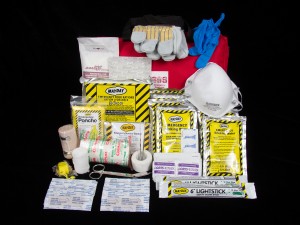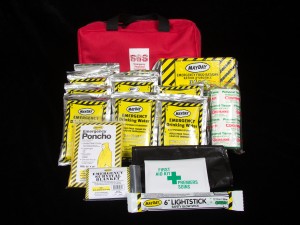Blog

Back to School Safety and Planning for Emergencies
Now is a good time to review back-to-school safety with your children and check school safety policies. Here are four tips for a safe return to school:
- Review your family emergency plan and check emergency kit supplies
Sit down with your children to talk about different kinds of emergencies and review your family emergency plan. Talk about what to do and where you will meet if you are not together when an emergency takes place. Involve your children in preparing an emergency kit or checking your emergency supplies to make sure you have key items on hand and check expiry dates on batteries and food.
- Be aware of school emergency procedures Make sure you read information from the school about their plan for emergencies, emergency procedures and alternate locations should an emergency take place. Also be sure to check that the school has current emergency contact information for your children, including work, mobile and home telephone numbers.
- Watch for children walking, cycling and coming off school buses
Children are small and easily distracted, and for drivers, this can create dangerous situations on the roads. Be vigilant and alert behind the wheel, especially in school zones. You never know when a small child might step out from between parked cars or off a sidewalk. And parents, take time to remind your children about crossing the street safely, wearing a helmet while cycling, and staying safe on buses.
- Obey crossing guards A crossing guard is there to keep children safe. If you come up to a set of lights while driving, and the light turns green, but the crossing guard still says stop, follow his/her direction and not the traffic light. There might be a child still crossing the street that you can’t see.
Back to School FUNDraising
Tired of the same old fundraisers? In British Columbia, all levels of government recommend that EVERY family should be self sufficient for a minimum of 72 hours in case of ANY emergency. Have your PAC committee sell 72 hour emergency preparedness kits and get YOUR community PREPARED and earn up to $14 for EVERY kit purchased. Call today 604.277.5855 x. 221
Blog

72hr kit for car
When we think of emergency preparedness it is human nature to think on a grand scale – of an earthquake, major flood and/or fire. Although it may be unlikely to be faced with one of these major disasters, there is no doubt that you will be faced with personal emergencies in your lifetime. Major traffic jam due to accident, rain, snow or wind;, power outage, bridge closure or snow storm. Carrying an emergency and/or emergency preparedness kit in your vehicle in case of earthquake will help you in ANY emergency. If you do not want to make something on your own – go to www.sostech.ca and purchase SQ6009 or SQ6010 (images shown) – these are perfect sized kits for the car.
We have created a list of items that you should consider in your kit – we have also rated the importance of each item.
M – MUST have – must have in order to survive
R – RECOMMEND – not required for survival but useful in an emergency
N – NICE to have – not necessary for survival but will make the experience more tolerable
M Water; 2 litres per person per day
M Food Bars; while granola bars and energy bars can be used they are thirst provoking. Try our Coast Guard approved 3600 calorie meal replacement bars
M Running shoes or walking shoes; always keep an extra pair in the car. You may have to walk home or long distances
M Hat; to serve as sun block or cover in the rain
M Gloves; for warmth or to move debris out of the way
R Blanket;
R Emergency (foil) Blanket; small and compact this can be used for shelter and warmth
N Change of clothes;
M First Aid Kit;
M City Map; If you are on foot or a disaster has changed the landscape a good map will help you find your way around
M Paper & Pen;
M Flashlight;
M Toilet paper or kleenex
M Whistle; to alert for help if required
R Duct Tape
R Swiss Army Knife
R Variety of hand tools; think about carrying screw driver, folding shovel & hammer
R Money; $20 in change can come in handy
N AM/FM radio; to keep informed
N Rope; useful for securing shelter
N Garbage Bags; provides protection from rain and can be used for emergency shelter

72hr EP Kit for car



